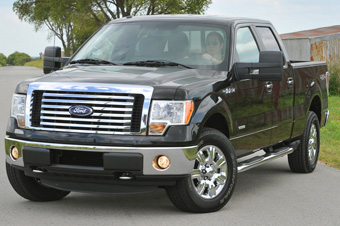
Analysis
With gasoline prices below $2.80 throughout the summer and U.S. retail demand showing only small signs of improvement in recent months, U.S. consumers have little inclination toward more fuel-efficient vehicles.
For the third straight quarter, the Ward’s Fuel Economy Index, which looks at average fuel-efficiency per new light vehicle sold, held steady at 22.3 mpg (10.5 L/100 km).
The 3-month average was down nearly 2% from year-ago, when “Cash-for-Clunkers” sparked new-vehicle demand and lifted the industry’s quarterly rating to an all-time high of 22.6 mpg (10.4 L/100 km).
However, since January, there has been little movement in the FEI, with total sales for the ʼ10 model year (Oct. 1-Sept. 30) also earning a 22.3 Index rating, up just 0.6% from ʼ09.
The nature of the market’s slow-moving recovery is another factor holding the Index down. Many lower-income buyers, who are more likely to purchase small cars, still are sitting out of the market.
Related document: Ward’s Fuel Economy Index
In contrast, commercial-fleet light-trucks accounted for a higher-than-average share of total LV deliveries. Sales growth of less fuel-efficient luxury vehicles outpaced the rest of the industry.
As a result, LVs averaging 20 mpg (11.8 L/100 km) or less made up 38.1% of ’10-model-year sales, compared with. 36.3% in ’09.
Cars and light trucks achieving 21-25 mpg (11.1-9.4 L/100 km) saw a slight increase as well, grabbing 39.4% of model-year sales, up from 39.1% in the prior year. But vehicles topping 25 mpg lost more than two share points, falling from 24.7 % of the market in’09 to just 22.5% in ’10.

Asia-based auto makers lifted their index-leading combined rating from 24.0 to 24.2 mpg (9.8 to 9.7 L/100 km), a 0.7% increase from the previous model year.
Toyota Motor Sales U.S.A. took its perennial seat atop the FEI with a 25.2 rating, unchanged from ’09, while second-ranked Hyundai Group narrowed the gap with a rating of 24.7 mpg (9.5 L/100 km), up 2.1% from ’09.
Europe-based auto makers, affected disproportionately by the pace of luxury sales, saw their overall rating fall 2.8% from 22 mpg to 21.4 mpg (10.7-10.9 L/100 km).
Chrysler Group LLC, Ford Motor Co. and General Motors Co. increased their combined rating from 19.9 to 20.2. Despite a 1% increase, Chrysler’s 19.9 mpg (11.8 L/100 km) average remained the lowest among the market’s top seven auto makers, reflecting the company’s truck-heavy sales mix.
While consumer preferences are not likely to change drastically in the coming quarters, Ward’s FEI is expected to show upward movement in the coming months with the widespread introduction of ’11 models, which generally have improved fuel economy compared with their predecessors.




